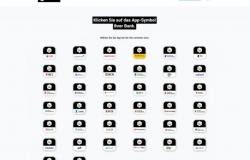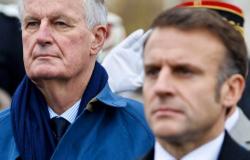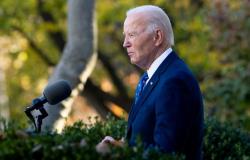Capital market regulators and operators kicked off the much-anticipated futures market on November 12, paving the way for a new stage in the transformation of capital market infrastructure.
This market, launched in parallel with a clearing house (CCP), offers financial instruments aimed at improving market liquidity and offering risk hedging solutions for various actors, such as companies, banks and institutional investors. .
However, the futures market also means new opportunities and new risks, which regulators must manage. “The regulation of derivatives products is always a concern for advanced economies, but it also represents an important issue for emerging and developing countries, which must find a delicate balance between greater integration into the international financial market, the attraction of FDI, and the protection of the economy against financial risks,” declared the Minister of Economy and Finance. She added that a massive inflow of capital can lead to overheating of the economy and the formation of speculative bubbles, while a sudden outflow of capital could cause a financial crisis. For this, according to her, the development of the capital market can only be sustainable if, on the one hand, it permanently takes into account the evolution of the risk environment, which imposes new standards and requirements, and , on the other hand, it is part of responsible, inclusive and sustainable finance. “These objectives cannot be achieved without cooperation and an exchange of experiences, particularly within debate and discussion platforms involving all stakeholders, and drawing inspiration from best practices and international standards,” insisted Nadia Fettah .
A market of resilience
For Nezha Hayat, president of the AMMC, the derivatives market is a sector where resilience is essential. “This explains the central role that the clearing house will play in managing the risks of this market,” she said.
Alongside other market infrastructures, the clearing house constitutes a pillar of market stability by providing security and transparency. “Financial futures instruments are relatively complex products and carry significant intrinsic risk. It is therefore essential to ensure that market players, including intermediaries and end customers, understand these products. Hence the crucial role of awareness-raising and financial education to ensure the proper functioning of the market,” she said. This is why the regulator has put in place various initiatives, notably in collaboration with the CFTC, the American derivatives regulator, in order to deploy an awareness and training program for market participants.
Abderrahim Bouazza, Director General of Bank Al-Maghrib (BAM), maintained that this reform, which initially introduces the “Index Futures” product, marks a turning point in the diversification of financial instruments, aiming to increase the depth and the competitiveness of the Moroccan capital market. He also highlighted the developments in three key segments of the capital market, namely the public debt market, the money market and the foreign exchange market, emphasizing the depth, liquidity and transparency of the debt market public, which has become a reference for other segments.
BAM prepares an over-the-counter rate swap market
In addition, he announced that BAM plans the launch, at the beginning of 2025, of two new segments: an interbank over-the-counter market for overnight rate swaps and an interbank forward foreign exchange market to allow economic operators to hedge against exchange rate risks.
A structuring product for asset management
Youssef Rouissi, Deputy Managing Director of the Corporate & Investment Banking Division of Attijariwafa bank, was delighted with the establishment of this market. “With this new infrastructure, we are moving from an over-the-counter market to an organized market, offering more transparency and standardization of contracts. This results in lower costs and a more stable environment for investors,” he said.
Lamia Boutaleb, president of the investment bank Capital Trust, recalled that derivatives broaden the scope of action of asset managers. She also highlighted the benefits of these products for risk management and portfolio optimization: “Now we can manage risks more precisely, whether they relate to interest rates, currencies or raw materials. For an equity fund, for example, it will be possible to hedge against falling prices, which allows better control of volatility and increased stability of portfolios. »
Nasser Seddiqi, president of the futures market coordination body, underlined the importance of this reform for Morocco’s international competitiveness: “The attractiveness of Moroccan markets is reinforced. Now, institutional investors, whether banks, insurance companies or companies, find tools in the futures market to protect themselves against a wider range of risks. » He also highlighted the potential for innovation that this framework offers, affirming that “this infrastructure makes it possible to design sophisticated financial products, adapted to the diverse needs of economic actors. »
Finally, all the speakers praised the exemplary management of the technological project which made it possible to set up this market infrastructure. “We now have a multi-asset technology engine, capable of adapting to future needs and supporting a wide range of derivative products,” concluded Tarik Senhaji, Director General of the Casablanca Stock Exchange.
The first requests for approvals for trading and clearing members have already been received by the AMMC, and a futures contract with MASI20 as the underlying is being prepared for an upcoming listing.
Transformation of the Casablanca Stock Exchange to support the project
During this event, several agreements were signed for the establishment of the clearing house, with the entry of banks into the capital alongside the Casablanca Stock Exchange, which becomes a holding company with a 35% stake in the capital of Maroclear.






